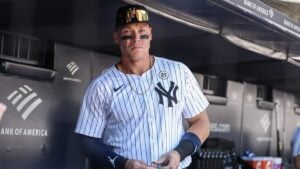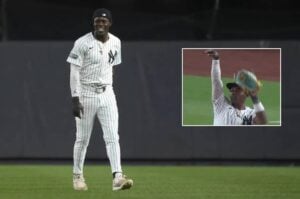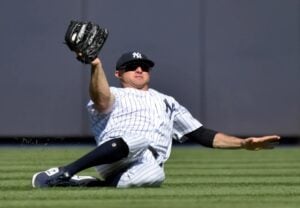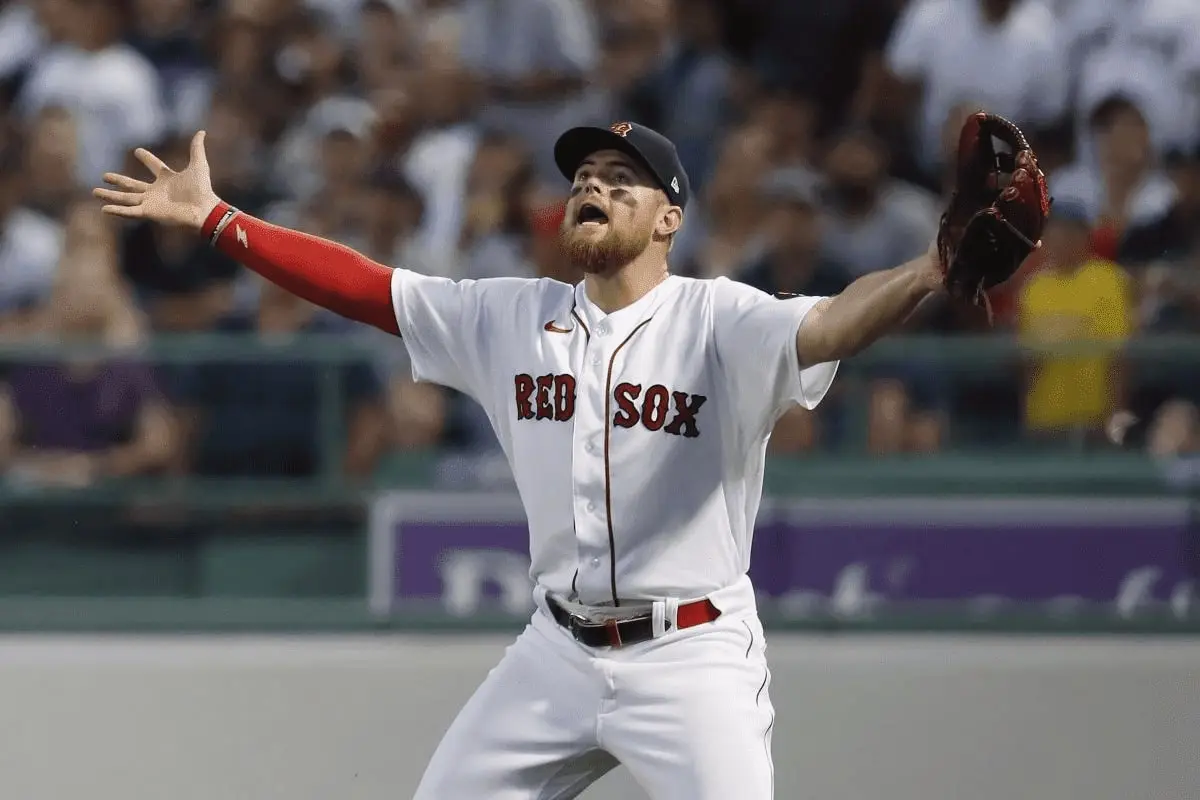Don Mattingly: The Yankees’ Hit Man
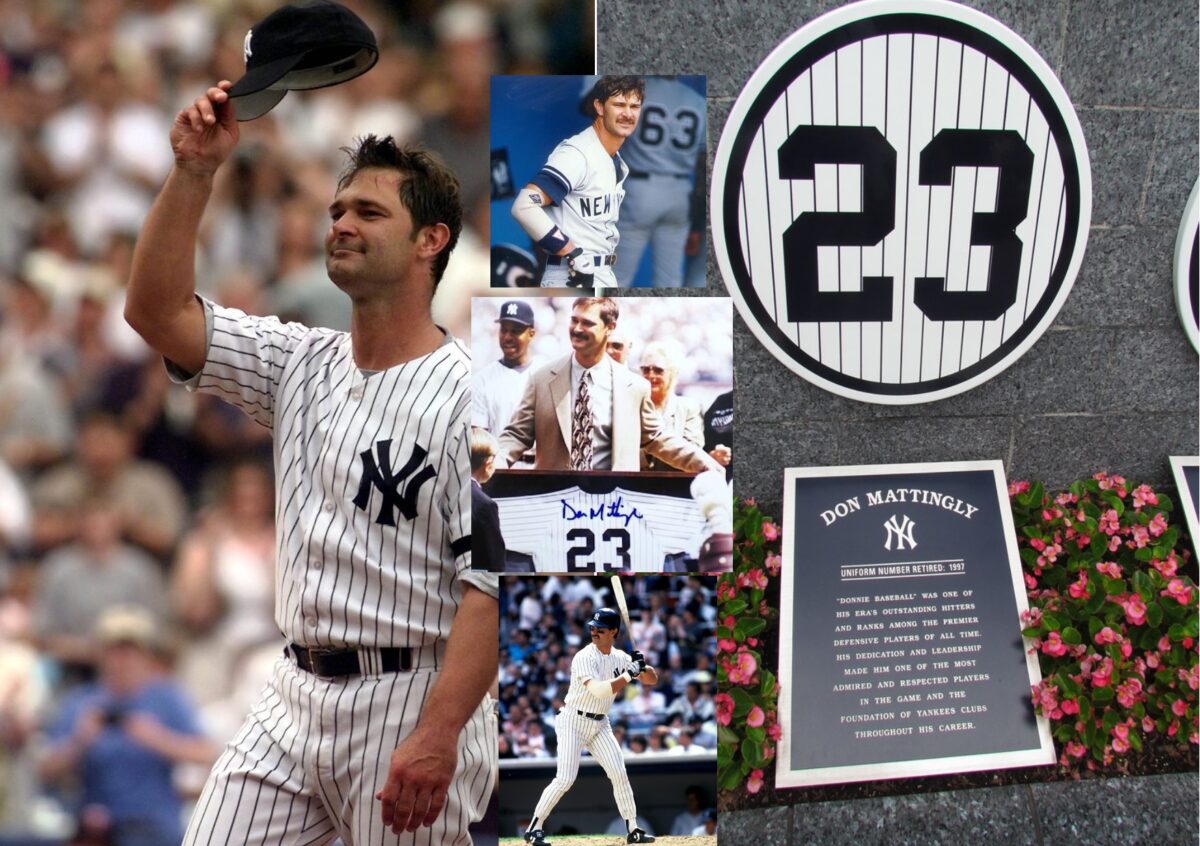

Esteban Quiñones
More Stories By Esteban Quiñones
- Mother’s Day: How Anthony Volpe’s mom molded him into a Yankee phenom
- Yankees trim payroll, part ways with Jon Berti to save $3.8 million
- Insider reveals Christian Walker and three more stars as Yankees’ offseason targets
- Aaron Judge looks ahead to 2025 with Yankees and Juan Soto: ‘We need him back’
- Red Sox legend hints at Juan Soto joining Boston If Yankees can’t seal deal
Table of Contents
| Position | First baseman |
| Active years | 1982 to 1995 |
| Teams (years) | New York Yankees (1982–1995) |
| Draft | 1979 |
| Debut | September 8, 1982, for the New York Yankees |
| Last game | October 1, 1995, for the New York Yankees |
| Date of Birth | April 20, 1961 (age 62) |
| Native place | Evansville, Indiana, U.S. |
| Batted | Left |
| Threw | Left |
| All-Star | 6× All-Star (1984–1989) |
| AL MVP | AL MVP (1985) |
| Shirt retired | New York Yankees No. 23 |
| MLB Awards | 3× Silver Slugger Award (1985–1987) |
| NL Manager of the Year (2020) | |
| 9× Gold Glove Award (1985–1989, 1991–1994) | |
| Legacy | Monument Park honoree |
| Manager of teams | Los Angeles Dodgers (2011–2015) Miami Marlins (2016–2022) |
| Coach of team | New York Yankees (2004–2007) Los Angeles Dodgers (2008–2010) Toronto Blue Jays (2023–present) |
| Nickname | “Hit Man” and “Donnie Baseball” |
The Bio
Don Mattingly stands as an epitome of excellence in the annals of the New York Yankees, despite the elusive World Series ring that never adorned his illustrious career. The year 1985 etched an indelible chapter in Yankees’ lore, with Don Mattingly’s heroic feats at its core. Affectionately known as “Donnie Baseball,” he transformed into the “Hit Man” during that season. Displaying an astonishing slash line of .324/.371/.567, he scorched the baseball diamond with 48 doubles, three triples, 35 magnificent home runs, and a mesmerizing 145 RBI. With these remarkable numbers, he carried the Yankees on his sturdy shoulders, securing the coveted MVP award, even though the team narrowly missed the playoffs. Don Mattingly’s 1985 performance remains the stuff of legends, a testament to his unwavering devotion to the pinstripes.
In addition to his unforgettable 1985 campaign, Don Mattingly’s illustrious career boasted a treasure trove of accolades. He claimed nine Gold Glove Awards, an extraordinary accomplishment, including a remarkable streak of five consecutive victories. Don Mattingly also earned three Silver Slugger Awards and clinched the American League batting title in 1984. The crowning jewel was the 1985 American League Most Valuable Player award, highlighting his unparalleled contributions to the Yankees. Serving as the team’s captain from 1991 to 1995, Don Mattingly’s leadership left an indelible mark on the franchise and cemented his status as one of the game’s finest minds.
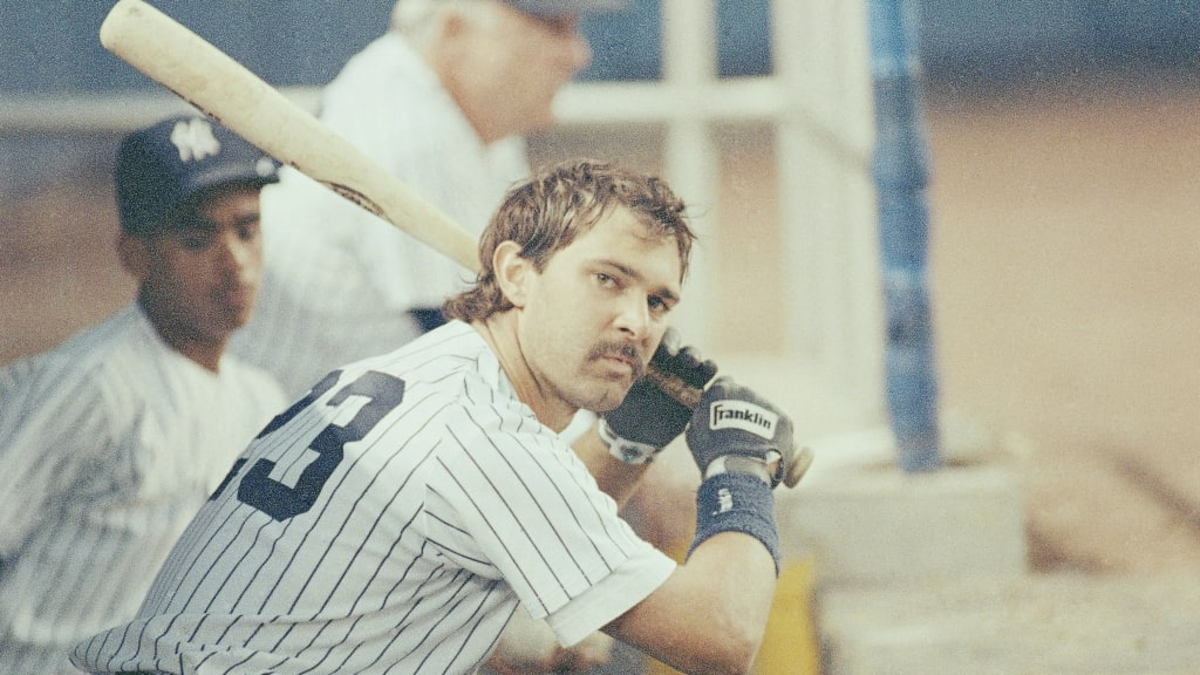
When it comes to defensive prowess, Don Mattingly’s name shines as a beacon of excellence. He boasts one of the most remarkable career fielding percentages in the history of the sport, with a staggering .9959 fielding percentage, making just four errors in every 1,000 opportunities. His nine Gold Glove awards, the second-most among first basemen, underscore his unmatched defensive skills. Yet, it would be a disservice to overlook his prowess at the plate. A lifetime batting average of .307, 222 home runs, and an incredible streak of three seasons with over 200 hits attest to the multifaceted brilliance of this baseball legend. Don Mattingly’s impact transcends statistics; it’s a legacy that endures as an integral part of the storied history of the New York Yankees.
Early life and career
Born on April 20, 1961, in Evansville, Indiana, Donald Arthur Mattingly was the youngest of five children to Bill and Mary Mattingly. Bill, a dedicated mailman, instilled in his youngest son a strong work ethic that would significantly shape Don’s future. As the youngest in the family, he eagerly joined his older brothers in neighborhood games. At just four years old, Don was smaller than most of the other players, but his fierce competitive spirit allowed him to hold his own in any ball game.
The rhythmic sound of Wiffle balls striking the metal garage door and spirited matches amid the closely spaced trees in the neighborhood honed Don’s ability to drive the ball with finesse. During his time at Reitz Memorial High School, Don excelled in three different sports, making his mark as the football team’s quarterback, the basketball squad’s star point guard, and the baseball team’s power hitter. However, it was a pivotal moment during a 1976 American Legion baseball game that would change his life. Facing a formidable pitcher from Owensboro, Kentucky, who happened to be the Cincinnati Reds’ top draft pick that year, the freshman Don Mattingly notched two doubles against the star pitcher, drawing the attention of scouts.
Don Mattingly’s reputation continued to grow as he helped lead Reitz Memorial to an impressive 59-game winning streak, culminating with a victory in the Indiana state championship game during his junior season. By 1979, Don Mattingly had garnered considerable attention as a promising prospect, earning a brief write-up in Sports Illustrated for his remarkable achievements. Although most teams hesitated to draft the high-school standout due to expectations that he would attend college, the New York Yankees took a chance and selected him in the 19th round of the 1979 amateur draft. They subsequently signed him to a minor-league contract.
Don Mattingly wasted no time proving his worth in the minor leagues, boasting an impressive .349 batting average with the Oneonta Yankees in the Class-A (short season) New York-Penn League during the 1979 season, in just 53 games. The following year, he advanced to Greensboro in the Class-A South Atlantic League, where he led the league with a remarkable .358 batting average. After a strong showing with Double-A Nashville (Southern League) in 1981, where he batted .315 and drove in 98 RBIs, Don Mattingly received a promotion to Triple-A Columbus for the 1982 season. There, he continued to excel with a .315 batting average, 10 home runs, 75 RBIs, and earned accolades for his defensive prowess.
With the expansion of major-league rosters to 40 players in September, the New York Yankees made the pivotal decision to call up Don Mattingly, marking the beginning of a remarkable journey in the major leagues. Years later, his impact on the game would be celebrated and cherished by baseball enthusiasts worldwide.
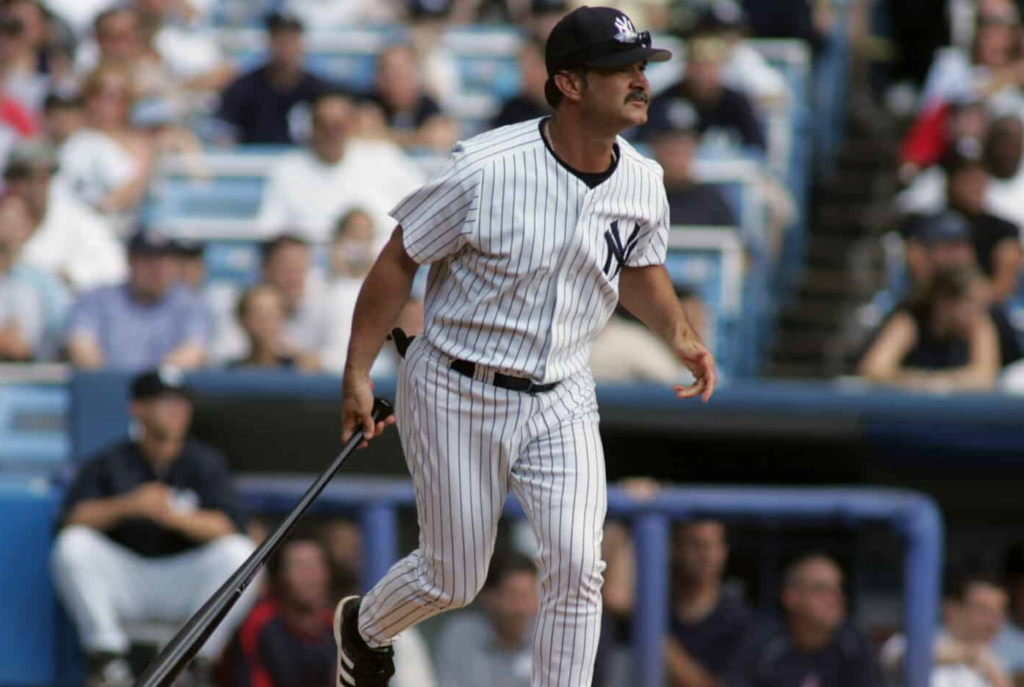
The MLB debut
Don Mattingly’s odyssey in Major League Baseball began on September 8, 1982, within the venerable confines of Yankee Stadium. It was here that he made his debut against the Baltimore Orioles, initially entering as a ninth-inning substitute for Dave Winfield in left field. Yet, it would take three more days for Don Mattingly to approach the batter’s box for his inaugural major-league at-bat, a pivotal moment against Milwaukee Brewers reliever Jim Slaton. Regrettably, the first pitch resulted in a pop-out to third base. It wasn’t until nearly three weeks had passed, precisely on October 1, that Don Mattingly notched his first major-league hit. In the 11th inning, he delivered a clutch single against Boston’s Steve Crawford at the hallowed Yankee Stadium. His debut season in the majors showcased two singles and one RBI in a mere 12 at-bats.
Spring training in 1983 witnessed Don Mattingly earning a roster spot, but the regular season initially offered him limited opportunities. After nearly two weeks into the season, he found himself with only seven at-bats and two hits to his name. On April 14, he was consequently demoted to the Triple-A Columbus team. In 43 games with Columbus, Don Mattingly exhibited his hitting prowess, boasting a stellar batting average of over .340 while tallying eight home runs and 37 RBIs. A fortunate turn of events unfolded when the Yankees’ Bobby Murcer announced his retirement on June 12, creating both a roster opening and a reserve outfield position. This development resulted in Don Mattingly’s return to the big league team. For the remainder of the season, he took on the roles of spot starter, pinch-hitter, and defensive replacement, showcasing his versatility across right field, left field, and first base.
Don Mattingly etched his name into the annals of baseball history on August 18, 1983, by displaying his adaptability as he took to the second base position. During the 1983 season, the 22-year-old made a compelling case for his place in the majors. He showcased his prowess as a proficient major-league hitter and a highly skilled defender, culminating in a season with a batting average of .283, complemented by four home runs and 32 RBIs in 279 at-bats.
The spring training of 1984 introduced a twist when the new manager, Yogi Berra, initially announced that Don Mattingly would not be a starter at the beginning of the season. Berra believed that Mattingly’s unique batting stroke allowed him to excel as a reserve player and pinch-hitter, even during extended periods of inactivity. Mattingly was batting an impressive .474 during this time. However, a few weeks into spring training, Mattingly’s on-field performance and his exceptional play at first base prompted a change of heart from Berra. It was decided that Mattingly would indeed begin the season as the regular first baseman.
Among those who recognized Don Mattingly’s extraordinary talent early on was none other than Yankees owner George Steinbrenner. As early as June 1984, Steinbrenner declared, “Mattingly is the best young talent in baseball,” firmly affirming his belief in the emerging star.
A star shining in the Bronx
The 1984 season witnessed a remarkable transformation in Don Mattingly’s offensive capabilities, notably his newfound power stroke. Even though he had never exceeded 10 home runs in a single minor league season, Don Mattingly had already crushed an astonishing 12 homers by the conclusion of June. Lou Piniella, serving as the Yankees’ hitting coach at the time, divulged his role in this impressive development. Piniella had worked tirelessly with the young hitter throughout the year, emphasizing the significance of maintaining balance and keeping the weight centered during the entire swing. This subtle adjustment in body weight resulted in a surge of power for Don Mattingly at the plate.

Don Mattingly’s incredible performance did not go unnoticed, and in July, he received his inaugural All-Star Game invitation, attributed to his outstanding .339 batting average and impressive power numbers. He made a crucial appearance during the game’s ninth inning as a pinch-hitter, with the American League trailing 3-1.
As the latter part of the 1984 season unfolded, Don Mattingly and his teammate Dave Winfield engaged in an electrifying race for the American League batting title. Winfield had a remarkable first half of the season, with his average soaring to .377 in early July. However, as August approached, Winfield’s form slightly waned, allowing Mattingly to close the gap. By the beginning of September, Don Mattingly held a .352 batting average, edging ahead of Winfield’s .351. This riveting competition for the batting crown captivated the imagination of New York City’s baseball scene.
The city’s newspapers, including the Daily News and the Post, offered daily coverage of the race, often dedicating entire pages to the contenders. In a city fervently hungry for baseball success, this batting race became a surrogate pennant race for ardent Yankees fans. Team owners embraced the competition, as it continued to fill the seats at Yankee Stadium, despite the Yankees trailing the Detroit Tigers by 15 games. The stadium’s scoreboard proudly displayed each player’s batting average to the ninth digit during the final two weeks of the season. The excitement was well-justified, given that no Yankee had won a batting crown since Mickey Mantle in 1956, and no pair of Yankees had ever finished as the top two hitters in the league.
Don Mattingly ultimately secured victory in the race, boasting a .343 average compared to Winfield’s .340. He also led the American League in hits with 207 and doubles with 44. Additionally, he ranked in the top five in RBIs, total bases, slugging percentage, and extra-base hits.
During the offseason, George Steinbrenner made the strategic acquisition of Rickey Henderson from the Oakland A’s. The Mattingly-Henderson combination unfolded precisely as Steinbrenner had envisioned. Mattingly capitalized on Henderson’s skill in setting the table, accumulating a major-league-leading 69 RBIs in his initial 83 games. His performance post the All-Star break was nothing short of spectacular, with a batting average of .340, 26 home runs, and 76 RBIs in the final 76 games.
Don Mattingly concluded the season with a batting average of .324, ranking the third-best in the American League. He launched 35 home runs, driving in 145 runs, the highest tally by a left-handed hitter since Ted Williams in 1949. Mattingly also led the major leagues in doubles with an impressive 48. He clinched his first Gold Glove award and, in November, secured the American League MVP award with 23 of 28 first-place votes, capping off a season that will forever be etched in baseball history.
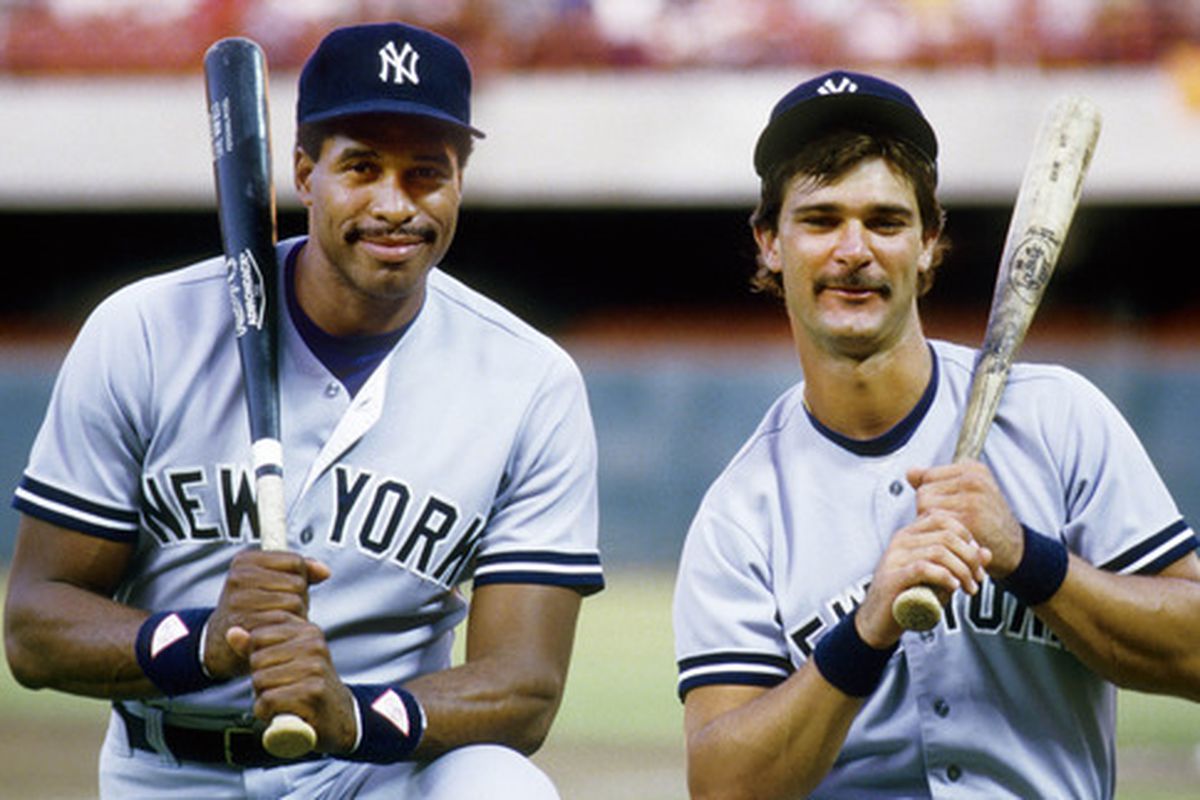
Even though the Yankees concluded the season without a playoff berth, Don Mattingly’s performance began to garner effusive praise from fellow players, coaches, and baseball writers. In the 1986 season, he delivered an extraordinary batting average of .352, amassing an impressive 238 hits, 53 doubles, 31 home runs, and 113 RBIs. His exceptional performance earned him second place in the MVP voting, with Roger Clemens taking the top spot. An additional historic note emerged in Don Mattingly’s career in 1986 when, on August 30, he became the first left-handed-throwing third baseman to grace the majors since Wee Willie Keeler in the early 1900s.
The commencement of the 1987 season saw Don Mattingly struggling to find his rhythm. After the initial 33 games, he held a batting average of just .240, accompanied by a meager three home runs. However, he soon hit his stride. Between May 14 and June 4, he managed to elevate his batting average to a respectable .311, and during that 20-game stretch, he contributed 15 RBIs. Just as he was returning to form, an unfortunate setback occurred. On June 4, Don Mattingly injured his lower back, and the circumstances surrounding the incident were a subject of debate. Some newspapers suggested it happened during a playful wrestling match with pitcher Bob Shirley in the clubhouse. The injury necessitated Don Mattingly to spend five days in traction at NYU Hospital. However, upon his return three weeks later, he demonstrated remarkable resilience. In his first 13 games back, Mattingly hit an impressive .370 (20-for-54) and drove in 12 runs.
The immaculate trade
A remarkable streak commenced on July 8, 1987, during a game at Yankee Stadium against the Minnesota Twins. Don Mattingly blasted a three-run homer in the first inning, setting the stage for what would become an iconic series of performances. The next evening, despite a loss to the White Sox, his solo homer in the sixth inning shone brightly. The following night, he delivered a grand slam during the Yankees’ seven-run second inning, marking his third bases-loaded home run of the season—a notable feat, considering he had never hit a grand slam in his career before 1987. Don Mattingly continued to dazzle, hitting solo homers in the subsequent two games against the White Sox, extending his streak to an astounding five consecutive games with home runs, just one shy of the American League record.
Don Mattingly’s remarkable offensive exploits during the streak were nothing short of spectacular. Over eight games, he unleashed a barrage of 10 home runs, including two grand slams, and drove in a jaw-dropping 21 runs. His bat was red-hot as he accumulated 17 hits in 37 at-bats, boasting an impressive .459 batting average. Don Mattingly’s performance also featured two doubles, contributing to his total of 11 runs scored. Remarkably, he only struck out twice during this remarkable stretch. With an astonishing 49 total bases in just 37 at-bats, Mattingly achieved a stratospheric 1.324 slugging average.
As the 1987 season drew to a close, Don Mattingly etched his name in the record books once more. On September 29, facing Red Sox starter Bruce Hurst, he unleashed another grand slam, sending the ball soaring into the right-field upper deck. This marked his sixth grand slam of the season, eclipsing the previous record of five held by Jim Gentile and Ernie Banks.
Don Mattingly’s final statistics for the year were nothing short of impressive, especially considering the 21 games he missed due to his back injury. He finished the season with a .327 batting average, 30 home runs, 115 RBIs, and a formidable .559 slugging percentage. Although he claimed the seventh spot in the MVP voting, the Yankees struggled, ending the season at 89-73 and fourth in their division. Despite his outstanding performance, Don Mattingly had yet to experience postseason play, marking five full seasons with the Yankees.
Don Mattingly continued to exhibit All-Star-level play in the subsequent two years. Despite driving in 88 runs in 1988, his two-year average for 1988-89 included a .307 batting average, 21 home runs, and 101 RBIs. Over his first six full seasons, Mattingly maintained an impressive career batting average of .327. He consistently averaged 203 hits, 43 doubles, 27 home runs, 114 RBIs, and 97 runs scored. This period also witnessed his emergence as a five-time Gold Glove winner and six consecutive All-Star team appearances. Eager for a new contract or an extension beyond his existing deal that concluded at the end of the 1990 season, Don Mattingly expressed his desire. The Yankees responded by making him the highest-paid player in baseball history at that time.
On April 10, 1990, the first baseman inked a five-year contract with a total value of $19.3 million, averaging an impressive $3.86 million per season. This landmark deal set a new record in terms of average salary. Yankees owner George Steinbrenner defended the substantial investment, stating, “A superstar is a superstar, so I can justify that salary. A Don Mattingly will attract people to see my club play,” underlining the immense value Mattingly brought to the franchise.
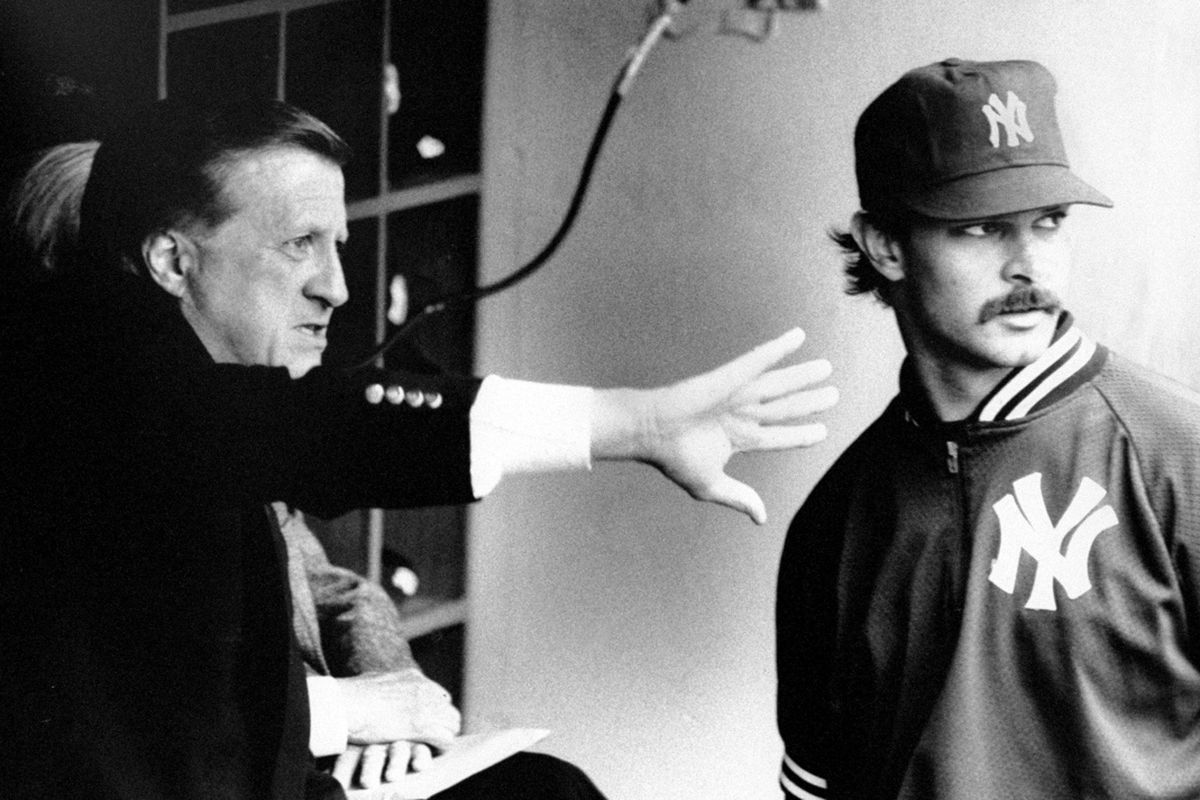
The comeback
In the early months of the 1990 season, Don Mattingly’s bat remained uncharacteristically silent. By June 1, he had managed a respectable .278 batting average, but his power seemed to have vanished. With just five homers and 24 RBIs in 45 games, it was evident that something was amiss. The situation deteriorated further as June unfolded. Over 28 games and 116 at-bats in June, Don Mattingly struggled, batting a mere .216 and failing to launch a single home run. By mid-July, his average had plummeted to .248, and his inexplicable homerless streak extended beyond 200 at-bats. Don Mattingly had been grappling with persistent back stiffness and spasms, leading him to request removal from the lineup after an impressive 231 consecutive starts.
Although he made a courageous return for a pain-laden 10-day stint from July 14 to July 24, the Yankees eventually placed Don Mattingly on the disabled list on July 26. Upon his reinstatement on September 12, it became evident that the chronic back injury had taken a toll on him, significantly altering his swing. In the closing days of the 1990 season, Mattingly saw limited action on the field, concluding the year with the most lackluster statistics of his illustrious career: a .256 batting average, a mere 5 home runs, and 42 RBIs in nearly 400 at-bats.
The summer of 1991 witnessed Don Mattingly’s growing frustration with the team’s direction, prompting him to request a trade. However, the Yankees firmly declined his request. Additionally, in adherence to the team’s well-known “haircut rule” as stipulated in his contract, Don Mattingly reluctantly submitted to a haircut, albeit with a differing perspective. Despite a reasonable .288 batting average, his 1991 season ended on a disappointing note, as he managed just nine home runs and a mere 68 RBIs.
The 1992 season marked a turning point for the New York Yankees, as they showed signs of improvement and unity. While the team won 76 games, which was a modest improvement over the previous year, they displayed a renewed sense of purpose. Don Mattingly also experienced a resurgence of sorts. He finished the season with the same .288 batting average as in 1991, but this time, his power made a return, although not at its peak. After averaging just seven home runs, 25 doubles, and 55 RBIs over the previous two seasons, Don Mattingly rebounded with 14 home runs, 40 doubles, and 86 RBIs. Additionally, he secured his seventh Gold Glove, signifying a return to form for the Yankees and their iconic first baseman.
In 1993, Don Mattingly continued his resurgence, delivering his best season since the 1980s. He posted a solid .291 batting average with 17 home runs and 86 RBIs. Don Mattingly also secured his eighth Gold Glove and finished 19th in MVP voting.
The 1994 season began promisingly for the Yankees as they held the first place in the AL East on May 9 and maintained their lead. However, a dark cloud loomed over the season. On August 12, 1994, the Players Association initiated a strike, casting a shadow over the baseball world. The Yankees, with a record of 70-43 and a commanding 6½ game lead over the second-place Orioles, found their season interrupted. It was on the day he left Yankee Stadium for Evansville that Don Mattingly expressed his disappointment with the strike. He even contemplated retirement, as the opportunity to chase the coveted championship ring faded away due to the postponement of the postseason on September 15, 1994.
In 1995, Don Mattingly finally realized his long-held dream of reaching the playoffs. This was a moment of celebration for Yankee fans, as the team made a postseason appearance for the first time in 14 years. The first two games of the new best-of-five ALDS took place at Yankee Stadium. In his first playoff game, Don Mattingly showcased his skills, going 2-for-4 with a double and an RBI in the Yankees’ 9-6 victory. The second game witnessed a tense battle with the
Seattle Mariners, who took a 2-1 lead after five innings. However, in the bottom of the sixth inning, Ruben Sierra’s efforts tied the game. Amidst the frenzy of 56,000 exuberant New Yorkers, Don Mattingly stepped into the batter’s box to face Andy Benes. With a deafening roar from the crowd, he crushed the second pitch of the at-bat over the “385” sign in right-center field, igniting the Stadium with explosive cheers. Fans in the upper tiers showered the field with caps, helmets, full cups of beer, Frisbees, and even a grapefruit. An indignant Lou Piniella, who was now managing the Mariners, temporarily withdrew his team from the field, refusing to send them back until the chaos subsided.
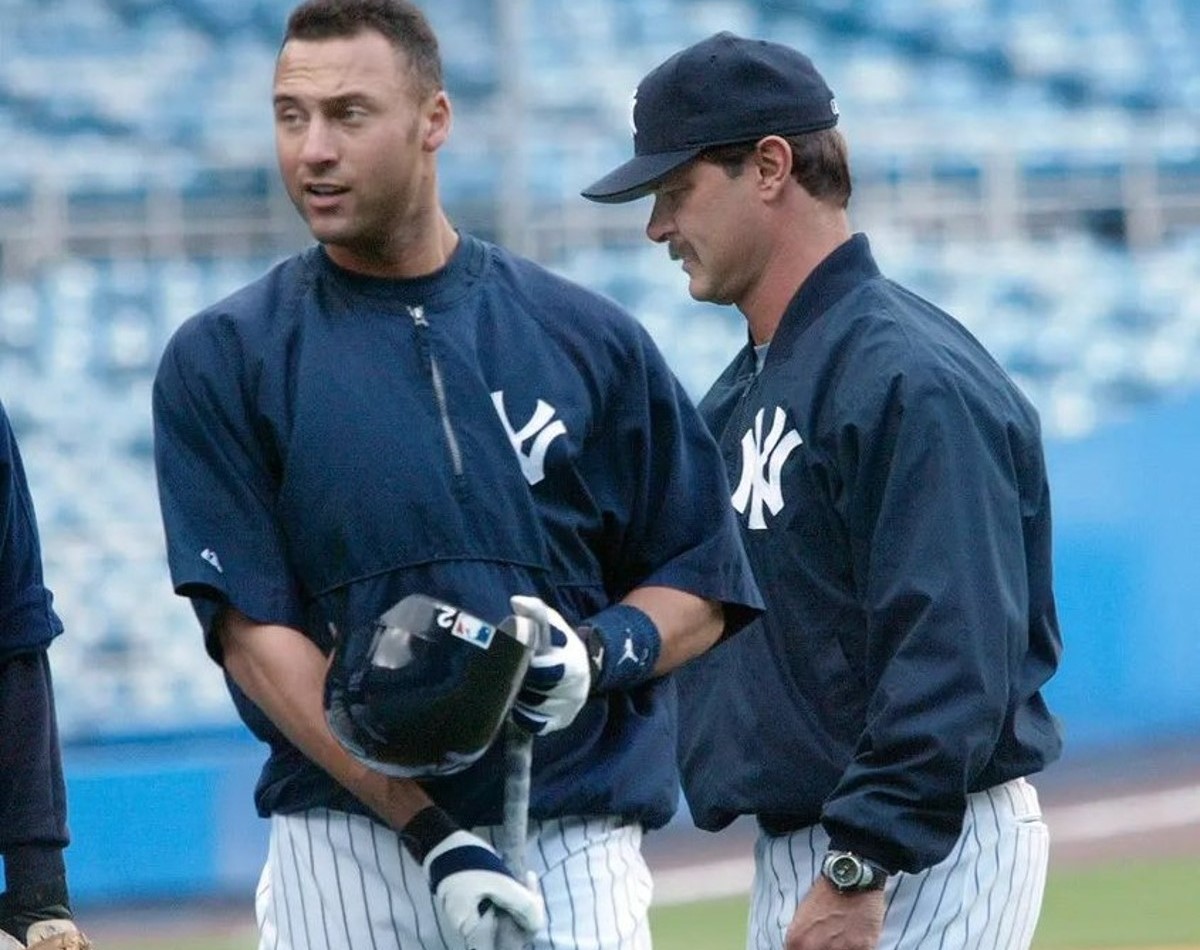
Nevertheless, the chants of “Don-nie Base-ball, Don-nie Base-ball” persisted until the captain emerged from the dugout, graciously tipping his cap to the adoring crowd. Don Mattingly’s monumental home run secured a 7-5 win and provided the Yankees with a commanding 2-0 lead in the series. Despite his heroic contributions, which included 10 hits in 24 at-bats, resulting in a remarkable .417 batting average, along with four doubles, a home run, and six RBIs, the Yankees, regrettably, could not advance in the series and fell short after losing Game 5.
Retirement and post-player career
After the 1995 season, the New York Yankees decided to bring in Tino Martinez as Don Mattingly’s successor. As the 1996 season approached, the player found himself unsigned, facing a pivotal decision. Ultimately, he chose to sit out the entire year, even turning down a tempting offer from the Baltimore Orioles, who sought to secure his services midway through the season.
It wasn’t until January 22, 1997, after a one-year self-imposed hiatus, that Don Mattingly made a significant announcement. In a press conference held at Yankee Stadium, he declared his retirement from professional baseball. A poignant moment followed seven months later, on August 31, 1997, when the Yankees paid tribute to their beloved captain by celebrating Don Mattingly Day at Yankee Stadium. During the moving ceremony, the team retired Mattingly’s iconic number 23 and unveiled a plaque in Monument Park, an enduring testament to Don Mattingly’s character, labeling him as “a humble man of grace and dignity, a captain who led by example, proud of the Pinstripe tradition and dedicated to the pursuit of excellence, a Yankee forever.”
For the subsequent seven years, Don Mattingly remained involved in the baseball world, albeit in part-time roles as a spring-training instructor and a roving minor-league hitting coach. Despite numerous entreaties to return to full-time baseball, he steadfastly maintained his “I’m just a horse farmer from Indiana” response whenever asked about resuming a coaching career.
However, on November 4, 2003, the Yankees delivered a surprising announcement, revealing their decision to hire Don Mattingly as the team’s hitting coach. In the 2004 season, the Yankees showcased an impressive performance, tying with the White Sox for the major-league lead in home runs, totaling 242, and securing a second-place finish in runs with 892. Don Mattingly received widespread praise from both players and pundits alike. Notably, his work with Jason Giambi stood out as one of his remarkable accomplishments. Giambi, who had faced a challenging 2004 season marred by revelations of steroid use and a benign tumor on his pituitary gland, made a remarkable comeback with Don Mattingly’s valuable guidance and support.
Don Mattingly dedicated himself to mentoring Giambi, investing hours of daily guidance for an entire month. The results were evident as Giambi’s performance began to rebound. In June, signs of progress emerged with a .310 batting average, one home run, and nine RBIs. Then, the explosion occurred. July witnessed Giambi’s remarkable resurgence, boasting a dazzling .355 average, along with 14 home runs and 24 RBIs. This resurgence continued throughout the season, concluding with a commendable .271 batting average, 32 home runs, and 87 RBIs. The culmination of his resurgence was the American League Comeback Player of the Year award, a well-deserved accolade that Giambi attributed to Don Mattingly’s invaluable guidance and support.
Don Mattingly’s role as the Yankees’ hitting coach persisted until the conclusion of 2006 when he earned a promotion to the position of bench coach in 2007. The year 2007 marked the end of Joe Torre’s 12-year tenure as the Yankees’ manager, paving the way for a new managerial era. Initially, Don Mattingly was hailed by the media as the frontrunner for the managerial position, but it ultimately went to Joe Girardi. Following his managerial disappointment, Torre took the helm of the Los Angeles Dodgers, where his first order of business was announcing Don Mattingly as the hitting coach. However, a few weeks later, He had to take a leave of absence from the club due to a challenging divorce. He eventually returned to the Dodgers after the All-Star break.
Don Mattingly’s journey continued as the Dodgers’ batting coach until the conclusion of the 2010 season, after which he assumed the managerial role, succeeding Joe Torre. Then, on October 29, 2015, the Miami Marlins appointed Mattingly as their manager, sealing the deal with a four-year contract.
Fast forward to September 25, 2022, and Don Mattingly and the Marlins reached a mutual agreement that he would conclude the season as manager, with no plans to return to the role in 2023. Subsequently, on November 30, 2022, the Toronto Blue Jays announced Mattingly’s new role as their bench coach. It’s worth noting that Don Mattingly had previously managed the MLB All-Star Team at the 2018 MLB Japan All-Star Series, showcasing his enduring commitment to the sport.
The legacy
Don Mattingly’s baseball legacy is remarkable. For six years, he stood as the game’s premier player, maintaining an average of .327, collecting 203 hits, 43 doubles, 27 home runs, 114 RBIs, and scoring 97 runs on average per season.
Renowned statistical analyst Bill James, in his 2001 Historical Baseball Abstract, ranked Don Mattingly as the 12th greatest first baseman in baseball history. He characterized Mattingly as a “100 percent ballplayer, zero percent bullshit.”
His illustrious career wrapped up with impressive statistics: 2,153 hits, 222 home runs, 1,007 runs scored, 1,099 RBIs, and a lifetime batting average of .307.
Despite his outstanding career, Don Mattingly is often cited as the finest Yankee player to have never participated in a World Series. His timing was somewhat unfortunate, with the Yankees losing the World Series just before his MLB debut and subsequently winning it in the first year following his retirement. The player’s strike in 1994 further compounded the World Series drought, as the Yankees had the best record in the American League that year before the season was cut short.
Don Mattingly’s number 23 was retired by the Yankees, and a plaque in his honor was dedicated in Monument Park at Yankee Stadium on August 31, 1997. He earned a spot on the American League All-Star team for six consecutive years. He also secured an impressive collection of accolades, including nine Gold Glove Awards (five consecutively), three Silver Slugger Awards, the 1984 American League batting title, and the 1985 American League Most Valuable Player award.
During his playing career, Don Mattingly only made one playoff appearance, where he shone in the 1995 ALDS against the Seattle Mariners, boasting a .417 batting average, .440 on-base percentage, and .708 slugging percentage, with a home run and six RBIs in five games.
As the Dodgers’ manager, Don Mattingly achieved a historic feat by leading the team to three consecutive postseason appearances, securing three straight NL West titles from 2013 to 2015.
Greatest moments and awards
- Winning the first of his nine Gold Glove Awards in 1985, second-most among first basemen in Major League history.
- Batting .340 with 26 home runs and 76 RBIs in his final 76 games of the 1985 season, finishing the season with a .324 batting average, 35 home runs, and 145 RBIs, the most by a left-handed hitter since Ted Williams drove in 159 in 1949.
- Leading the major leagues in doubles with 48 in 1986.
- Winning the American League batting title in 1984 with a .343 batting average.
- Being named the American League MVP in 1985.
- Hitting six grand slams in 1987, tying the Major League record for most grand slams in a single season.
- Being named to six All-Star teams.
- Hitting a home run in eight consecutive games in 1987, tying the Major League record for most consecutive games with a home run.
- Being inducted into the New York Yankees’ Hall of Fame in 1997.
- Having his number 23 retired by the New York Yankees in 1997.
- Nine Gold Glove Awards.
- American League MVP in 1985.
- American League batting title in 1984.
- New York Yankees’ Hall of Fame inductee in 1997.
- Number 23 retired by the New York Yankees in 1997.
- Runner-up in National League Manager of the Year vote in 2013.
- Elected into the Hall of Fame by Modern Era Committee in 2022.
FAQs
How old is Don Mattingly?
As of November 7, 2023, Mattingly is 62 years old.
Why is Don Mattingly not in the Hall of Fame?
Don Mattingly has not been inducted into the Hall of Fame despite his impressive career due to a combination of factors, including injuries that shortened his career, a lack of postseason success, and the perception that his numbers were not quite good enough to merit induction.
When did Don Mattingly retire?
Mattingly retired from baseball after the 1995 season.
What position did Don Mattingly play?
Mattingly played first base.
Who did Don Mattingly play for?
Mattingly played his entire career for the New York Yankees.
Where is Don Mattingly now?
Mattingly was the manager of the Miami Marlins until 2022.
How much is Don Mattingly’s rookie card worth?
The value of Don Mattingly’s rookie card varies depending on the condition and specific card, but some can be worth thousands of dollars.
Where does Don Mattingly live?
It is not publicly known where Don Mattingly currently lives.
Where is Don Mattingly from?
Don Mattingly was born and raised in Evansville, Indiana.
Who did Don Mattingly replace?
Don Mattingly did not replace anyone on the Yankees, as he was a highly-touted prospect who was groomed to be the team’s first baseman.
Where did Don Mattingly go to college?
Don Mattingly did not attend college, as he was drafted by the Yankees straight out of high school.
Who is Don Mattingly?
Don Mattingly is a former professional Yankees baseball player and manager of the Miami Marlins.
How much is Don Mattingly worth?
Don Mattingly’s net worth is estimated to be around $25 million.
How old is Don Mattingly’s wife?
Don Mattingly’s wife, Lori Mattingly was born on February 2, 1971 (52 years old).
How many grand slams did Don Mattingly hit in 1987?
Don Mattingly hit six grand slams during the 1987 season.
Why did Don Mattingly retire?
Don Mattingly retired due to persistent back injuries that had plagued him throughout his career.
How tall is Don Mattingly?
Don Mattingly is 6 feet tall.
Who does Don Mattingly coach for?
Don Mattingly was the manager of Miami Marlins.
How many years did Don Mattingly play?
Don Mattingly played for 14 seasons in the major leagues.
Where was Don Mattingly born?
Don Mattingly was born in Evansville, Indiana.
When did Don Mattingly play for the Yankees?
Don Mattingly played his entire career for the New York Yankees, from 1982 to 1995.
Who played first base for the Yankees before Don Mattingly?
Bob Watson played first base for the Yankees before Don Mattingly.
What does Don Mattingly do in the Marlins organization?
Don Mattingly was the manager of the Miami Marlins.
How many World Series did Don Mattingly win?
Don Mattingly did not win any World Series championships during his playing career.
What number did Don Mattingly wear?
Don Mattingly wore number 23 during his playing career.
How much does Don Mattingly make per year as manager of the Marlins?
Don Mattingly’s salary as manager of the Marlins is not publicly known.
What number is Don Mattingly wearing with the Marlins?
Don Mattingly wears number 8 as manager of the Marlins.
How much is a 92 Fleer Ultra Don Mattingly worth?
The value of a 92 Fleer Ultra Don Mattingly card varies depending on the condition, but it is generally not worth more than a few dollars.
How much is a 88 Topps J Don Mattingly worth?
The value of an 88 Topps J Don Mattingly card varies depending on the condition, but it is generally not worth more than a few dollars.
When did Don Mattingly live in Indiana?
Don Mattingly was born and raised in Indiana, but it is not publicly known when he moved away.
What is Don Mattingly’s nickname?
Don Mattingly’s nickname is “Donnie Baseball.”
Who is Don Mattingly married to?
Don Mattingly is married to Lori Mattingly.
How much is a 92 Score Pinnacle Don Mattingly worth
The value of a 92 Score Pinnacle Don Mattingly card varies depending on the condition, but it is generally not worth more than a few dollars.
What is a Don Mattingly collection book 6 worth?
The value of a Don Mattingly collection book 6 varies depending on the condition and specific book, but it is generally not worth more than a few dollars.
What minor league team did Don Mattingly play for in 1981?
Don Mattingly played for the Nashville Sounds, the Yankees’ Triple-A affiliate, in 1981.
How long has Don Mattingly been the Dodgers manager?
Don Mattingly is no longer the manager of the Dodgers, but he managed the team from 2011 to 2015.
How old was Don Mattingly when he retired?
Don Mattingly was 34 years old when he retired.
Why is Jeter keeping Don Mattingly?
Derek Jeter, the owner of the Marlins, had kept Don Mattingly as manager due to his leadership and experience in the game.
Who is better, Don Mattingly or Keith Hernandez?
Opinions on who is better between Don Mattingly and Keith Hernandez vary depending on who you ask. Both were successful stars in the ballpark.
Why did Don Mattingly leave the Dodgers?
Don Mattingly left the Dodgers after the 2015 season due to disagreements with the team’s front office.
What are Don Mattingly’s career stats?
Don Mattingly had a career batting average of .307, hit 222 home runs, and drove in 1,099 runs over 14 seasons.
Who was married to Don Mattingly baseball player?
Don Mattingly is married to Lori Mattingly.
What does #8 mean on Don Mattingly’s 1984 Topps rookie card?
The number 8 on Mattingly’s 1984 Topps rookie card is simply his uniform number.
In 1987, Don Mattingly set a record for home runs. He hit at least one home run in how many games?
Mattingly set a record for hitting at least one home run in eight consecutive games in 1987. During that season, he hit a total of 30 home runs
How did Don Mattingly grip his bat?
Don Mattingly used a unique grip on his bat, with his pinky finger off the knob and his other fingers tightly wrapped around the handle.
What kind of sunglasses does Don Mattingly wear?
As manager of the Dodgers, Mattingly wore Beacon Rx sunglasses.
How to watch Don Mattingly documentary?
It depends on which Don Mattingly documentary you are referring to. You can search for it on streaming services or check your local TV listings.
What is Don Mattingly’s jersey number?
Don Mattingly wore number 23 during his playing career.
How many Gold Gloves does Don Mattingly have?
Don Mattingly won nine Gold Glove Awards during his career.
Why is Don Mattingly called Donnie Baseball?
Don Mattingly is called Donnie Baseball due to his impressive hitting and fielding abilities during his playing career.
Whose record did Don Mattingly break with 7 grand slams in one season?
Don Mattingly tied the record for most grand slams in a single season with seven, a record that was previously held by several players.
Why does Don Mattingly wear 8?
Don Mattingly wore number 8 in honor of Yogi Berra.
When did Paul O’Neill and Don Mattingly play together?
Paul O’Neill and Don Mattingly played together on the Yankees from 1991 to 1995.
How much is a Don Mattingly coin worth?
The value of a Don Mattingly coin varies depending on the specific coin and its condition.
Why was Don Mattingly fired?
Don Mattingly was not fired from his most recent job as manager of the Marlins. He left the Dodgers after the 2015 season due to disagreements with the team’s front office.
Who did Don Mattingly replace as Marlins manager?
Don Mattingly replaced Dan Jennings as Marlins manager in 2016.
Why was Don Mattingly allowed to have a mustache with the Yankees?
Don Mattingly was allowed to have a mustache with the Yankees because it was not explicitly prohibited by the team’s grooming policy.
How many career home runs did Don Mattingly hit?
Don Mattingly hit 222 home runs during his career.
Don Mattingly documentary where to watch?
It depends on which Don Mattingly documentary you are referring to. You can search for it on streaming services or check your local TV listings.
How did Don Mattingly lose Rookie of the Year?
Don Mattingly did not win Rookie of the Year due to the impressive performance of Cal Ripken Jr. in his rookie season.
How old was Don Mattingly when he made the major leagues?
Mattingly was 21 years old when he made his major league debut.
How many games has Don Mattingly coached?
Mattingly has coached over 1,000 games as a manager in the major leagues.
What team did Don Mattingly play for?
Mattingly played his entire career for the New York Yankees.
What outfield position did Don Mattingly play?
Don Mattingly primarily played first base, but he also played a few games in the outfield during his career.
What if Don Mattingly played in a different time?
It is impossible to know how Mattingly’s career would have turned out if he played in a different era.
How did Don Mattingly contribute to Indiana?
Don Mattingly is a native of Indiana and has been involved in various charitable and community efforts in the state.
What Don Mattingly rookie card is worth the most?
The value of Mattingly’s rookie cards varies depending on the specific card and its condition, but his 1984 Topps rookie card is generally considered to be the most valuable.
Who is MLB player Don Mattingly?
Don Mattingly is a former MLB player and current manager of the Miami Marlins.
What is the Don Mattingly hair scandal?
There was no specific “hair scandal” involving Mattingly, but he was known for his long hair during his playing career, which was against the Yankees’ grooming policy at the time.
How long has Don Mattingly been coach of the Los Angeles Dodgers?
Mattingly was the manager of the Los Angeles Dodgers from 2011 to 2015.
How does Don Mattingly compare to David Wright?
Don Mattingly and David Wright played in different eras and positions, so it is difficult to make a direct comparison between them.
Don Mattingly how many double plays?
Mattingly turned 169 double plays during his career.
What years did Don Mattingly play for the Yankees?
Don Mattingly played for the Yankees from 1982 to 1995
The Stats
| SUMMARY | WAR | AB | H | HR | BA | R | RBI | SB | OBP | SLG | OPS | OPS+ |
| Career | 42.4 | 7003 | 2153 | 222 | 0.307 | 1007 | 1099 | 14 | 0.358 | 0.471 | 0.83 | 127 |
Standard Batting
| Year | G | PA | AB | R | H | 2B | 3B | HR | RBI | SB | CS | BB | SO | BA | OBP | SLG | OPS | OPS+ | TB | GDP | HBP | SH | SF | IBB | Pos |
| 1982 | 7 | 13 | 12 | 0 | 2 | 0 | 0 | 0 | 1 | 0 | 0 | 0 | 1 | 0.167 | 0.154 | 0.167 | 0.321 | -11 | 2 | 2 | 0 | 0 | 1 | 0 | /73H9 |
| 1983 | 91 | 305 | 279 | 34 | 79 | 15 | 4 | 4 | 32 | 0 | 0 | 21 | 31 | 0.283 | 0.333 | 0.409 | 0.742 | 107 | 114 | 8 | 1 | 2 | 2 | 5 | 397/H4 |
| 1984 | 153 | 662 | 603 | 91 | 207 | 44 | 2 | 23 | 110 | 1 | 1 | 41 | 33 | 0.343 | 0.381 | 0.537 | 0.918 | 156 | 324 | 15 | 1 | 8 | 9 | 8 | *37/9H8 |
| 1985 | 159 | 727 | 652 | 107 | 211 | 48 | 3 | 35 | 145 | 2 | 2 | 56 | 41 | 0.324 | 0.371 | 0.567 | 0.939 | 156 | 370 | 15 | 2 | 2 | 15 | 13 | *3 |
| 1986 | 162 | 742 | 677 | 117 | 238 | 53 | 2 | 31 | 113 | 0 | 0 | 53 | 35 | 0.352 | 0.394 | 0.573 | 0.967 | 161 | 388 | 17 | 1 | 1 | 10 | 11 | *3/5D |
| 1987 | 141 | 630 | 569 | 93 | 186 | 38 | 2 | 30 | 115 | 1 | 4 | 51 | 38 | 0.327 | 0.378 | 0.559 | 0.937 | 146 | 318 | 16 | 1 | 0 | 8 | 13 | *3/DH |
| 1988 | 144 | 651 | 599 | 94 | 186 | 37 | 0 | 18 | 88 | 1 | 0 | 41 | 29 | 0.311 | 0.353 | 0.462 | 0.816 | 128 | 277 | 13 | 3 | 0 | 8 | 14 | *3/D7H |
| 1989 | 158 | 693 | 631 | 79 | 191 | 37 | 2 | 23 | 113 | 3 | 0 | 51 | 30 | 0.303 | 0.351 | 0.477 | 0.828 | 133 | 301 | 15 | 1 | 0 | 10 | 18 | *3D/9 |
| 1990 | 102 | 428 | 394 | 40 | 101 | 16 | 0 | 5 | 42 | 1 | 0 | 28 | 20 | 0.256 | 0.308 | 0.335 | 0.643 | 81 | 132 | 13 | 3 | 0 | 3 | 13 | 3D/H7 |
| 1991 | 152 | 646 | 587 | 64 | 169 | 35 | 0 | 9 | 68 | 2 | 0 | 46 | 42 | 0.288 | 0.339 | 0.394 | 0.733 | 103 | 231 | 21 | 4 | 0 | 9 | 11 | *3D/H |
| 1992 | 157 | 686 | 640 | 89 | 184 | 40 | 0 | 14 | 86 | 3 | 0 | 39 | 43 | 0.288 | 0.327 | 0.416 | 0.742 | 108 | 266 | 11 | 1 | 0 | 6 | 7 | *3D/H |
| 1993 | 134 | 596 | 530 | 78 | 154 | 27 | 2 | 17 | 86 | 0 | 0 | 61 | 42 | 0.291 | 0.364 | 0.445 | 0.809 | 120 | 236 | 20 | 2 | 0 | 3 | 9 | *3/DH |
| 1994 | 97 | 436 | 372 | 62 | 113 | 20 | 1 | 6 | 51 | 0 | 0 | 60 | 24 | 0.304 | 0.397 | 0.411 | 0.808 | 113 | 153 | 8 | 0 | 0 | 4 | 7 | *3/H |
| 1995 | 128 | 507 | 458 | 59 | 132 | 32 | 2 | 7 | 49 | 0 | 2 | 40 | 35 | 0.288 | 0.341 | 0.413 | 0.754 | 97 | 189 | 17 | 1 | 0 | 8 | 7 | *3/HD |
| G | PA | AB | R | H | 2B | 3B | HR | RBI | SB | CS | BB | SO | BA | OBP | SLG | OPS | OPS+ | TB | GDP | HBP | SH | SF | IBB | ||
| 14 Yrs | 1785 | 7722 | 7003 | 1007 | 2153 | 442 | 20 | 222 | 1099 | 14 | 9 | 588 | 444 | 0.307 | 0.358 | 0.471 | 0.83 | 127 | 3301 | 191 | 21 | 13 | 96 | 136 | |
| 162 Game Avg. | 162 | 701 | 636 | 91 | 195 | 40 | 2 | 20 | 100 | 1 | 1 | 53 | 40 | 0.307 | 0.358 | 0.471 | 0.83 | 127 | 300 | 17 | 2 | 1 | 9 | 12 |
Postseason Batting
| Year | G | PA | AB | R | H | 2B | 3B | HR | RBI | SB | CS | BB | SO | BA | OBP | SLG | OPS | TB | GDP | HBP | SH | SF | IBB | WPA | cWPA |
| 1995 | 5 | 25 | 24 | 3 | 10 | 4 | 0 | 1 | 6 | 0 | 0 | 1 | 5 | 0.417 | 0.44 | 0.708 | 1.148 | 17 | 1 | 0 | 0 | 0 | 0 | 0.19 | 4.90% |
| 1 ALDS | 5 | 25 | 24 | 3 | 10 | 4 | 0 | 1 | 6 | 0 | 0 | 1 | 5 | 0.417 | 0.44 | 0.708 | 1.148 | 17 | 1 | 0 | 0 | 0 | 0 | 0.19 | 4.90% |
Career Graph
| Hall of Fame | All-Star Game | Awards | MVP (rank, share) |
| 2001 BBWAA (28.2%) 2002 BBWAA (20.3%) 2003 BBWAA (13.7%) 2004 BBWAA (12.8%) 2005 BBWAA (11.4%) 2006 BBWAA (12.3%) 2007 BBWAA ( 9.9%) 2008 BBWAA (15.8%) 2009 BBWAA (11.9%) 2010 BBWAA (16.1%) 2011 BBWAA (13.6%) 2012 BBWAA (17.8%) 2013 BBWAA (13.2%) 2014 BBWAA ( 8.2%) 2015 BBWAA ( 9.1%) | 1984 * 1985 * 1986 * 1987 (1B) 1988 * 1989 * | 1984 AL Batting Title 1984 AL TSN All-Star 1985 AP All-Star 1985 Major League Player of the Year 1985 AL MVP 1985 AL TSN All-Star 1986 AP All-Star 1986 AL TSN All-Star 1987 AP All-Star 1987 AL TSN All-Star 1993 Lou Gehrig Memorial Award 2020 NL Mgr of the year | 1984 AL (5, 28%) 1985 AL (1, 94%) 1986 AL (2, 66%) 1987 AL (7, 23%) 1989 AL (15, 6%) 1993 AL (19, 2%) 1994 AL (18, 2%) 1 MVP 2.22 Career Shares (86th) |
| Gold Gloves | Silver Sluggers | Monthly Awards | Weekly Awards |
| 1985 AL (1B) 1986 AL (1B) 1987 AL (1B) 1988 AL (1B) 1989 AL (1B) 1991 AL (1B) 1992 AL (1B) 1993 AL (1B) 1994 AL (1B) All multiple winners | 1985 AL (1B) 1986 AL (1B) 1987 AL (1B) All multiple winners | 1985 August AL Player of the Month 1985 September AL Player of the Month 1986 September AL Player of the Month 1987 July AL Player of the Month | 1984 Jul 29th AL Player of the Week 1985 Aug 11th AL Player of the Week 1987 Jul 12th AL Player of the Week 1987 Jul 19th AL Player of the Week 1988 Jul 17th AL Player of the Week 1993 Jul 18th AL Player of the Week |
| Wins Above Replacement | WAR Position Players | Offensive WAR | Batting Average |
| 1984 AL 6.3 (7th) 1985 AL 6.5 (9th) 1986 AL 7.2 (6th) | 1984 AL 6.3 (5th) 1985 AL 6.5 (5th) 1986 AL 7.2 (3rd) 1987 AL 5.1 (9th) | 1984 AL 5.8 (6th) 1985 AL 6.5 (4th) 1986 AL 7.2 (2nd) | 1984 AL .343 (1st) 1985 AL .324 (3rd) 1986 AL .352 (2nd) 1987 AL .327 (5th) 1988 AL .311 (8th) Career .307 (131st) |
| On-Base% | Slugging % | On-Base Plus Slugging | Games Played |
| 1984 AL .381 (10th) 1986 AL .394 (5th) | 1984 AL .537 (2nd) 1985 AL .567 (2nd) 1986 AL .573 (1st) 1987 AL .559 (7th) 1989 AL .477 (8th) | 1984 AL .918 (3rd) 1985 AL .939 (2nd) 1986 AL .967 (1st) 1987 AL .937 (7th) | 1986 AL 162 (2nd) 1989 AL 158 (10th) |
| At Bats | Plate Appearances | Runs Scored | Hits |
| 1985 AL 652 (4th) 1986 AL 677 (3rd) 1989 AL 631 (7th) 1992 AL 640 (5th) | 1985 AL 727 (4th) 1986 AL 742 (1st) 1989 AL 693 (7th) | 1985 AL 107 (6th) 1986 AL 117 (3rd) 1988 AL 94 (10th) | 1984 AL 207 (1st) 1985 AL 211 (2nd) 1986 AL 238 (1st) 1987 AL 186 (7th) 1988 AL 186 (7th) 1989 AL 191 (7th) 1992 AL 184 (6th) Career 2,153 (204th) |
| Total Bases | Doubles | Home Runs | Runs Batted In |
| 1984 AL 324 (4th) 1985 AL 370 (1st) 1986 AL 388 (1st) 1987 AL 318 (6th) 1989 AL 301 (4th) Career 3,301 (222nd) | 1984 AL 44 (1st) 1985 AL 48 (1st) 1986 AL 53 (1st) 1987 AL 38 (3rd) 1989 AL 37 (6th) 1992 AL 40 (3rd) Career 442 (118th) | 1985 AL 35 (4th) 1986 AL 31 (6th) | 1984 AL 110 (5th) 1985 AL 145 (1st) 1986 AL 113 (3rd) 1987 AL 115 (5th) 1989 AL 113 (2nd) Career 1,099 (219th) |
| Singles | Adjusted OPS+ | Runs Created | Adj. Batting Runs |
| 1984 AL 138 (6th) 1985 AL 125 (10th) 1986 AL 152 (2nd) 1988 AL 131 (7th) 1989 AL 129 (10th) 1992 AL 130 (10th) Career 1,469 (235th) | 1984 AL 156 (2nd) 1985 AL 156 (3rd) 1986 AL 161 (1st) 1987 AL 146 (6th) 1989 AL 133 (10th) Career 127 (236th) | 1984 AL 120 (4th) 1985 AL 136 (4th) 1986 AL 150 (1st) 1989 AL 104 (9th) Career 1,168 (228th) | 1984 AL 46 (2nd) 1985 AL 51 (3rd) 1986 AL 58 (1st) 1987 AL 38 (6th) Career 268 (178th) |
| Adj. Batting Wins | Extra Base Hits | Times On Base | Offensive Win % |
| 1984 AL 4.5 (2nd) 1985 AL 4.9 (3rd) 1986 AL 5.6 (1st) 1987 AL 3.6 (6th) Career 25.9 (184th) | 1984 AL 69 (4th) 1985 AL 86 (1st) 1986 AL 86 (1st) 1987 AL 70 (4th) 1989 AL 62 (5th) Career 684 (214th) | 1985 AL 269 (5th) 1986 AL 292 (2nd) | 1984 AL .716 (3rd) 1985 AL .719 (4th) 1986 AL .753 (2nd) 1987 AL .677 (8th) |
| Sacrifice Flies | Intentional Bases on Balls | Double Plays Grounded Into | AB per SO |
| 1984 AL 9 (6th) 1985 AL 15 (1st) 1986 AL 10 (2nd) 1987 AL 8 (8th) 1988 AL 8 (4th) 1989 AL 10 (5th) 1991 AL 9 (3rd) 1995 AL 8 (10th) Career 96 (45th) | 1985 AL 13 (3rd) 1986 AL 11 (5th) 1987 AL 13 (3rd) 1988 AL 14 (5th) 1989 AL 18 (2nd) 1990 AL 13 (4th) 1991 AL 11 (10th) Career 136 (72nd) | 1991 AL 21 (6th) 1993 AL 20 (4th) 1995 AL 17 (7th) Career 191 (136th) | 1984 AL 18.3 (2nd) 1985 AL 15.9 (3rd) 1986 AL 19.3 (3rd) 1987 AL 15.0 (4th) 1988 AL 20.7 (1st) 1989 AL 21.0 (2nd) 1991 AL 14.0 (8th) 1992 AL 14.9 (5th) 1993 AL 12.6 (6th) 1994 AL 15.5 (3rd) 1995 AL 13.1 (5th) |
| AB per HR | Outs Made | Base-Out Runs Added (RE24) | Win Probability Added (WPA) |
| 1985 AL 18.6 (9th) | 1989 AL 465 (9th) | 1984 AL 41.07 (6th) 1985 AL 55.28 (4th) 1986 AL 46.56 (2nd) 1987 AL 33.99 (10th) 1989 AL 36.62 (7th) Career 242.45 (238th) | 1984 AL 4.2 (4th) 1985 AL 4.7 (4th) 1986 AL 4.5 (3rd) 1989 AL 3.7 (8th) Career 23.1 (219th) |
| Situ. Wins Added (WPA/LI) | Championship WPA (cWPA) | Base-Out Wins Added (REW) | Putouts |
| 1984 AL 3.6 (5th) 1985 AL 4.7 (4th) 1986 AL 5.5 (1st) 1989 AL 2.8 (10th) | 1985 AL 4.4 (3rd) 1986 AL 2.9 (7th) 1988 AL 4.0 (6th) | 1984 AL 4.1 (5th) 1985 AL 5.4 (4th) 1986 AL 4.5 (2nd) 1987 AL 3.2 (10th) 1989 AL 3.7 (7th) Career 23.8 (239th) | 1986 AL 1,378 (1st) 1987 AL 1,239 (5th) 1988 AL 1,250 (4th) 1989 AL 1,276 (5th) 1992 AL 1,209 (4th) 1993 AL 1,258 (2nd) 1994 AL 919 (3rd) Career 14,270 (59th) |
| Def. Games as 1B | Putouts as 1B | Assists as 1B | Errors Committed as 1B |
| 1985 AL 159 (3rd) 1986 AL 160 (1st) 1992 AL 143 (4th) Career 1,634 (54th) | 1986 AL 1,377 (1st) 1987 AL 1,239 (5th) 1988 AL 1,250 (4th) 1989 AL 1,274 (5th) 1992 AL 1,209 (4th) 1993 AL 1,258 (2nd) 1994 AL 919 (3rd) Career 14,148 (57th) | 1984 AL 124 (2nd) 1992 AL 116 (3rd) 1994 AL 68 (3rd) Career 1,104 (41st) | 1988 AL 9 (4th) 1989 AL 7 (5th) 1995 AL 7 (4th) |
| Double Plays Turned as 1B | Total Zone Runs as 1B (s.1953) | Range Factor/9Inn as 1B | Range Factor/Game as 1B |
| 1984 AL 135 (2nd) 1985 AL 154 (1st) 1986 AL 132 (2nd) 1987 AL 122 (5th) 1988 AL 131 (3rd) 1989 AL 143 (3rd) 1991 AL 135 (1st) 1992 AL 129 (3rd) 1993 AL 123 (3rd) 1994 AL 95 (2nd) Career 1,500 (23rd) | 1987 AL 9 (5th) 1991 AL 6 (2nd) 1992 AL 6 (1st) 1993 AL 5 (4th) 1994 AL 4 (3rd) Career 33 (31st) | 1987 AL 9.76 (5th) 1989 AL 9.95 (5th) 1990 AL 10.15 (2nd) 1993 AL 10.80 (1st) 1994 AL 10.62 (1st) Career 9.71 (52nd) | 1986 AL 9.23 (5th) 1987 AL 9.50 (4th) 1989 AL 9.39 (5th) 1990 AL 9.87 (1st) 1991 AL 9.42 (5th) 1992 AL 9.27 (5th) 1993 AL 10.32 (1st) 1994 AL 10.18 (1st) |
| Fielding % as 1B | Salary | Youngest | |
| 1984 AL .996 (1st) 1985 AL .995 (1st) 1986 AL .996 (1st) 1987 AL .996 (1st) 1988 AL .993 (5th) 1989 AL .995 (5th) 1991 AL .996 (4th) 1992 AL .997 (1st) 1993 AL .998 (1st) 1994 AL .998 (1st) Career .996 (11th) | 1986 AL $1,375,000 (7th) 1987 AL $1,975,000 (4th) 1988 AL $2,000,000 (4th) 1989 AL $2,200,000 (7th) 1990 AL $2,500,000 (6th) 1991 AL $3,420,000 (8th) | 1982 AL born 1961-04-20 (4th) 1993 AL 10.32 (1st) 1994 AL 10.18 (1st) |
- Categories: don mattingly, Yankees legends
- Tags: don mattingly, Yankees legends


 Follow Us
Follow Us
